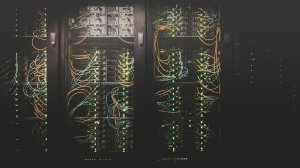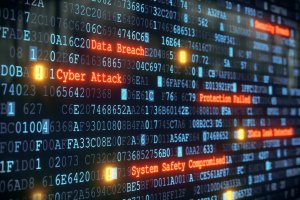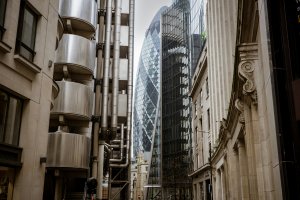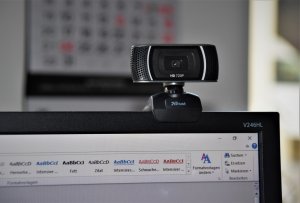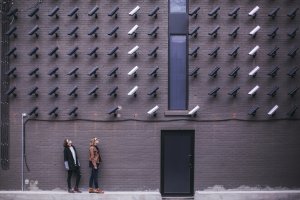- Employment law for employers
- Data Protection

Longer Reads
What are the limits on video surveillance in the workplace?
The scandal surrounding Matt Hancock should re-emphasise the importance of employees keeping their private lives separate from their working lives and it also raises the important question of whether an employer’s video surveillance of employees is legal.
2 minute read
Published 29 July 2021
Key information
- Specialisms
- Dispute Resolution
The former Health Secretary was caught on CCTV in the Department of Health allegedly having an affair with an aide in June of this year. This scandal surrounding Matt Hancock should re-emphasise the importance of employees keeping their private lives separate from their working lives and it also raises the important question of whether an employer’s video surveillance of employees is legal.
Guidance from the Information Commissioner’s Office
In its Employment Practices Code, the Information Commissioner’s Office (the ICO) discusses the use of CCTV in the workplace. If an employer is intending to use CCTV, the approach preferred by the ICO is for the employer to perform an impact assessment to consider the benefits and any adverse impacts of such monitoring. Employees should be notified of the fact that video surveillance is being carried out and also the reasons for it. CCTV should be targeted at areas of particular risk and to areas where expectations of privacy are low.
If covert video recording is being considered, ICO guidance is that this is only to be authorised if there is suspicion of criminal activity or malpractice such that alerting employees to the recording would prejudice its detection. However, covert recording should not extend to areas that employees ‘genuinely and reasonably expect to be private’ (e.g. toilets or private offices). If, in the process of conducting covert recordings, other information is collected, this should be disregarded and deleted unless it reveals information that ‘no reasonable employer could be expected to ignore’.
CCTV and Article 8 of the European Convention on Human Rights
A principal area of tension with CCTV recording in the workplace concerns an employee’s right to respect for their private life under Article 8 of the European Convention on Human Rights. In Antović and Mirković v Montenegro, a university installed video surveillance cameras in student auditoriums with the aim of protecting people and monitoring teaching. The European Court of Human Rights (the ECtHR) decided that two professors’ Article 8 rights were infringed by these cameras. In the decision, importance was placed on the considerable intrusion into employees’ private lives that workplace surveillance caused. It was held that the surveillance in this situation went further than was necessary when considering the respect for private lives under Article 8.
In contrast, in López Ribalda and others v Spain the Grand Chamber of the ECtHR held that covert surveillance used to catch employees committing workplace theft did not infringe their Article 8 rights. The monitoring had been proportionate because: (1) the surveillance was taking place in an area that was also open to the public and so there was a limited expectation of privacy; (2) the monitoring was limited in scope and lasted only 10 days; (3) a small number of staff had been able to view the footage; and (4), informing employees of the video surveillance would have prejudiced the purpose of the recording (i.e. to catch the thieves). This judgment demonstrates that whilst an employee’s Article 8 right is protected, employers are actually able to use video surveillance, and even covert video surveillance, when it is proportionate.
Advice for employers
When an employer is considering implementing CCTV in the workplace, the first question it should ask is whether the video monitoring is necessary to achieve the desired aim. If this aim can be achieved by less intrusive means, even in some circumstances without any form of monitoring, then CCTV would likely be disproportionately in conflict with an employee’s Article 8 right.
After considering the above, if an employer still thinks video surveillance is necessary, the employer should endeavour to be as transparent with the employees as possible. This will require notification of the nature of the video monitoring and why it is being used. Keen focus should be placed on the extent of the monitoring, the scale of the video surveillance in both time and area, and limitations on the number of people who have access to the footage.
Related content
Longer Reads
What are the limits on video surveillance in the workplace?
The scandal surrounding Matt Hancock should re-emphasise the importance of employees keeping their private lives separate from their working lives and it also raises the important question of whether an employer’s video surveillance of employees is legal.
Published 29 July 2021
Associated sectors / services
Authors
The former Health Secretary was caught on CCTV in the Department of Health allegedly having an affair with an aide in June of this year. This scandal surrounding Matt Hancock should re-emphasise the importance of employees keeping their private lives separate from their working lives and it also raises the important question of whether an employer’s video surveillance of employees is legal.
Guidance from the Information Commissioner’s Office
In its Employment Practices Code, the Information Commissioner’s Office (the ICO) discusses the use of CCTV in the workplace. If an employer is intending to use CCTV, the approach preferred by the ICO is for the employer to perform an impact assessment to consider the benefits and any adverse impacts of such monitoring. Employees should be notified of the fact that video surveillance is being carried out and also the reasons for it. CCTV should be targeted at areas of particular risk and to areas where expectations of privacy are low.
If covert video recording is being considered, ICO guidance is that this is only to be authorised if there is suspicion of criminal activity or malpractice such that alerting employees to the recording would prejudice its detection. However, covert recording should not extend to areas that employees ‘genuinely and reasonably expect to be private’ (e.g. toilets or private offices). If, in the process of conducting covert recordings, other information is collected, this should be disregarded and deleted unless it reveals information that ‘no reasonable employer could be expected to ignore’.
CCTV and Article 8 of the European Convention on Human Rights
A principal area of tension with CCTV recording in the workplace concerns an employee’s right to respect for their private life under Article 8 of the European Convention on Human Rights. In Antović and Mirković v Montenegro, a university installed video surveillance cameras in student auditoriums with the aim of protecting people and monitoring teaching. The European Court of Human Rights (the ECtHR) decided that two professors’ Article 8 rights were infringed by these cameras. In the decision, importance was placed on the considerable intrusion into employees’ private lives that workplace surveillance caused. It was held that the surveillance in this situation went further than was necessary when considering the respect for private lives under Article 8.
In contrast, in López Ribalda and others v Spain the Grand Chamber of the ECtHR held that covert surveillance used to catch employees committing workplace theft did not infringe their Article 8 rights. The monitoring had been proportionate because: (1) the surveillance was taking place in an area that was also open to the public and so there was a limited expectation of privacy; (2) the monitoring was limited in scope and lasted only 10 days; (3) a small number of staff had been able to view the footage; and (4), informing employees of the video surveillance would have prejudiced the purpose of the recording (i.e. to catch the thieves). This judgment demonstrates that whilst an employee’s Article 8 right is protected, employers are actually able to use video surveillance, and even covert video surveillance, when it is proportionate.
Advice for employers
When an employer is considering implementing CCTV in the workplace, the first question it should ask is whether the video monitoring is necessary to achieve the desired aim. If this aim can be achieved by less intrusive means, even in some circumstances without any form of monitoring, then CCTV would likely be disproportionately in conflict with an employee’s Article 8 right.
After considering the above, if an employer still thinks video surveillance is necessary, the employer should endeavour to be as transparent with the employees as possible. This will require notification of the nature of the video monitoring and why it is being used. Keen focus should be placed on the extent of the monitoring, the scale of the video surveillance in both time and area, and limitations on the number of people who have access to the footage.
Associated sectors / services
- Employment law for employers
- Data Protection
Authors
Need some more information? Make an enquiry below.
Subscribe
Please add your details and your areas of interest below
Article contributor
Tania
GoodmanPartner - Head of Employment
Specialising in Employment law for employees and Employment law for employers
Enjoy reading our articles? why not subscribe to notifications so you’ll never miss one?
Subscribe to our articlesMessage us on WhatsApp (calling not available)
Please note that Collyer Bristow provides this service during office hours for general information and enquiries only and that no legal or other professional advice will be provided over the WhatsApp platform. Please also note that if you choose to use this platform your personal data is likely to be processed outside the UK and EEA, including in the US. Appropriate legal or other professional opinion should be taken before taking or omitting to take any action in respect of any specific problem. Collyer Bristow LLP accepts no liability for any loss or damage which may arise from reliance on information provided. All information will be deleted immediately upon completion of a conversation.
Close
